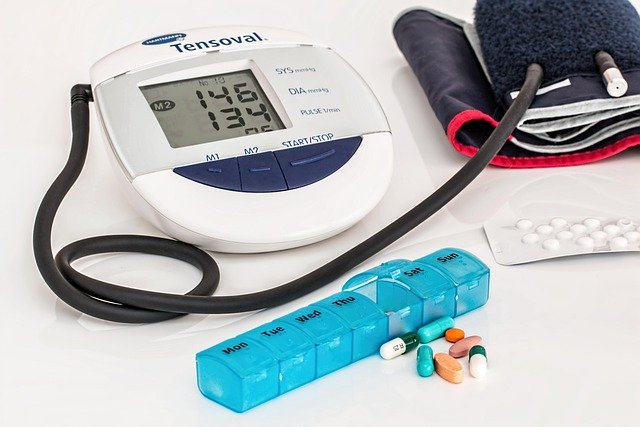Arteriosclerosis: Understanding the Silent Threat to Heart Health
Arteriosclerosis is a condition that affects millions of people worldwide, often without their knowledge. This cardiovascular disease is characterized by the thickening and hardening of artery walls, which can lead to serious health complications if left untreated. As a major contributor to heart disease and stroke, understanding arteriosclerosis is crucial for maintaining overall health and well-being.

The heart, being a muscular organ that relies on a constant supply of oxygen-rich blood, is particularly vulnerable to the effects of arteriosclerosis. When coronary arteries become narrowed or blocked due to plaque buildup, it can lead to coronary artery disease, potentially resulting in chest pain (angina) or heart attacks.
What are the main causes of artery plaque buildup?
Several factors contribute to the development of artery plaque, leading to arteriosclerosis:
-
High cholesterol levels: Elevated levels of low-density lipoprotein (LDL) cholesterol, often called “bad” cholesterol, can contribute to plaque formation.
-
Hypertension: High blood pressure can damage the inner lining of arteries, making them more susceptible to plaque accumulation.
-
Smoking: Tobacco use can damage blood vessels and increase the risk of plaque buildup.
-
Diabetes: Chronic high blood sugar levels can damage artery walls and accelerate plaque formation.
-
Obesity: Excess body weight is associated with increased inflammation and metabolic imbalances that promote plaque development.
-
Sedentary lifestyle: Lack of regular physical activity can contribute to various risk factors for arteriosclerosis.
-
Genetic factors: Some individuals may have a genetic predisposition to developing arteriosclerosis.
How does cholesterol contribute to arteriosclerosis?
Cholesterol plays a central role in the development of arteriosclerosis. While cholesterol is essential for various bodily functions, including hormone production and cell membrane structure, an excess can lead to health problems. LDL cholesterol, in particular, can accumulate in the artery walls, forming the core of arterial plaque.
When LDL cholesterol particles become oxidized, they trigger an inflammatory response in the artery walls. This inflammation attracts white blood cells, which attempt to remove the oxidized LDL. However, these white blood cells can become trapped in the artery wall, creating a cycle of inflammation and further plaque buildup.
High-density lipoprotein (HDL) cholesterol, often referred to as “good” cholesterol, helps counteract this process by removing excess cholesterol from the bloodstream and transporting it to the liver for disposal. Maintaining a healthy balance between LDL and HDL cholesterol is crucial for preventing arteriosclerosis.
What are the symptoms and health risks associated with arteriosclerosis?
Arteriosclerosis often develops silently over many years, with no apparent symptoms in its early stages. As the condition progresses, symptoms may appear depending on which arteries are affected:
-
Coronary arteries: Chest pain (angina), shortness of breath, or heart attack.
-
Cerebral arteries: Transient ischemic attacks (mini-strokes) or stroke.
-
Peripheral arteries: Pain or cramping in the legs, especially when walking.
-
Renal arteries: High blood pressure or kidney dysfunction.
The health risks associated with arteriosclerosis are significant and can be life-threatening. These include:
-
Heart attack
-
Stroke
-
Aneurysm
-
Peripheral artery disease
-
Chronic kidney disease
Early detection and management of arteriosclerosis are crucial for reducing these risks and maintaining cardiovascular health.
How can arteriosclerosis be prevented and managed?
Prevention and management of arteriosclerosis involve a combination of lifestyle changes and medical interventions:
-
Healthy diet: Consume a diet rich in fruits, vegetables, whole grains, lean proteins, and healthy fats. Limit saturated fats, trans fats, and cholesterol intake.
-
Regular exercise: Engage in at least 150 minutes of moderate-intensity aerobic activity or 75 minutes of vigorous-intensity aerobic activity per week.
-
Quit smoking: If you smoke, quitting is one of the most important steps you can take to improve your cardiovascular health.
-
Maintain a healthy weight: Achieve and maintain a healthy body mass index (BMI) through diet and exercise.
-
Manage underlying conditions: Control diabetes, high blood pressure, and high cholesterol through medication and lifestyle changes as prescribed by your healthcare provider.
-
Stress management: Practice stress-reduction techniques such as meditation, yoga, or deep breathing exercises.
-
Regular check-ups: Schedule regular health screenings to monitor cholesterol levels, blood pressure, and other cardiovascular risk factors.
In some cases, medication may be necessary to manage arteriosclerosis. Statins, for example, are commonly prescribed to lower cholesterol levels and reduce the risk of heart attacks and strokes. Other medications may be used to control blood pressure, manage diabetes, or prevent blood clots.
Arteriosclerosis is a complex condition that requires a comprehensive approach to prevention and management. By understanding the factors that contribute to its development and taking proactive steps to maintain cardiovascular health, individuals can significantly reduce their risk of developing this potentially life-threatening condition. Regular consultation with healthcare professionals and adherence to recommended lifestyle changes and treatments are essential for effectively managing arteriosclerosis and promoting overall heart health.
This article is for informational purposes only and should not be considered medical advice. Please consult a qualified healthcare professional for personalized guidance and treatment.






